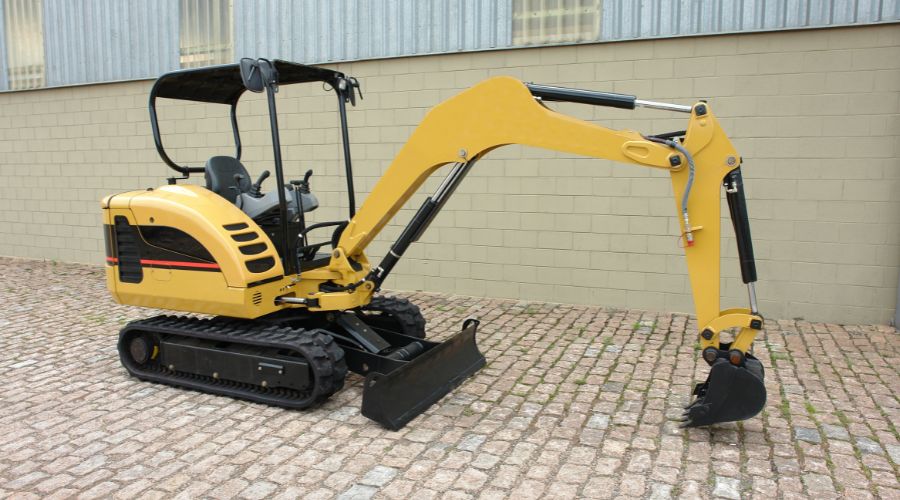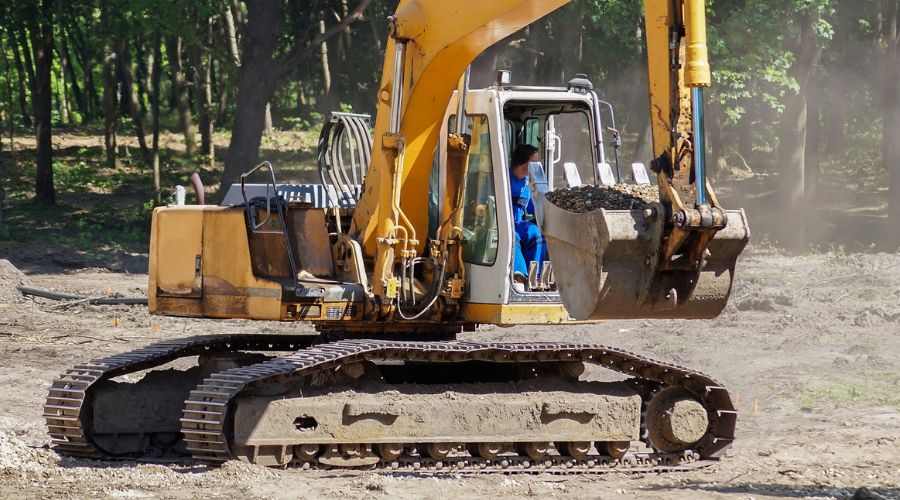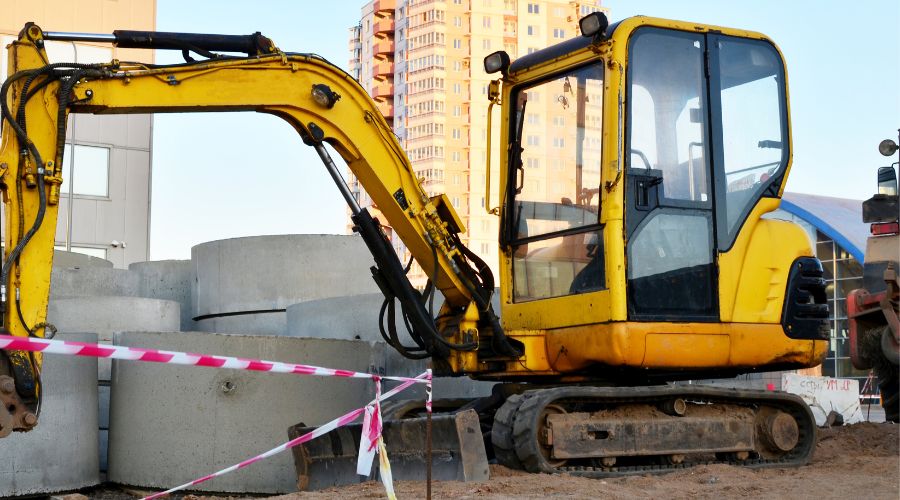1. Understanding Mini Excavator Weight

Excavators are fundamental pieces of heavy machinery employed for many kinds of projects, such as building, extracting minerals, agriculture, and landscaping. Excavators are a helpful instrument on building sites, as they can carry out a variety of jobs. They have the capability of doing jobs ranging from lifting and digging up to demolition and material handling, thanks to the different attachments they can be outfitted with, such as buckets, breakers, and grapples. Excavators may enhance the project’s efficiency and improve overall production by virtue of their versatility. They are equipped with the capacity to dig trenches, clear ground, lay foundations, and perform other crucial initial construction project duties.
Modern excavators come with advanced features, including hydraulic controls and GPS systems, which offer operators precise control over digging and lifting activities. In performing jobs requiring precise measurements and alignments, this precision is important. Whenever heavy lifting and digging positions are carried out with excavators, safety can be improved as less manual labour needs to be done in risky situations. Operators may perform duties while maintaining a safe distance, minimising the possibility of accidents.
Mini excavators, frequently referred to as mini-diggers, mini-hoes, and mini-ex are scaled-down peers to traditional excavators. Due to their compact size, mini excavators are well suited for working in restricted locations where larger excavators may find it difficult to operate. They can get into spaces that regular-sized excavators cannot due to their decreased size. Even though they are likewise small, skid-steer loaders have different features and uses than mini excavators.
Skid-steer loaders excel in activities like material handling, grading, and working in confined places because of their adaptability, agility, and capacity to turn within their own footprint. They might not, however, provide the same digging and excavation powers as tiny excavators.
The weight requirements differ based on the project. A small excavator’s working weight will help you choose the most suitable tool for the job. For projects needing little ground disturbance, small mini excavators may be more appropriate; inversely, heavier ones might come in handy for tasks like heavy lifting or excavating.
2. What Weight Do Mini Excavators Carry?

According to the models, mini excavators are known for their compact size and versatility, and their functioning weights can vary. The functioning weights of mini excavators typically range from 2,000 to 20,000 pounds. This weight range allows mini excavators to handle a wide variety of tasks in confined spaces. Standard excavators are larger, more robust machines designed for heavy-duty applications. It generally weighs between 22,000 and 99,000 pounds, emphasising its significant size and power. An excavator weighing seven pounds or less can be considered a “mini excavator”, highlighting the lack of consensus.
For the purpose of enabling operators to use them comfortably near buildings and other structures, mini excavators often have limited or extremely low tail swings. Mini excavators are a better option for job sites with numerous underground pipes or gas lines, as they offer higher accuracy than bigger digging machinery. Mini excavators need less gasoline than larger excavators, making them easy to carry on a truck or trailer.
Mini excavators can be used on soft ground without ripping up the surface and on completed sites without damaging the pavement or walkways since they are smaller. Mini excavators may not have the exact same power as larger ones, yet, so they aren’t necessarily able to meet every job’s particular needs for lift capacity or dig depth.
3. Choosing The Right Mini Excavator

Determining the purpose is an effective way to choose the best excavator for a task. A suitable type of excavator will be chosen when it is apparent what purpose it is going to serve on the job site.
The Size: Review your project’s needs. You must have a small excavator with greater power if the machine has to handle hard substrate. The gadget must be strong and capable of holding an immense amount of weight. While working in tight places, you must determine the excavator’s height and width so that it can pass through narrow gates or roadways. The excavator’s swing radius is another important factor to measure. Again, if you’re working in a restricted area, it’s necessary to make sure that the swing radius is modest. You may prevent swing accidents at work by doing this.
Horsepower: Compact excavators typically offer a horsepower range from around 10 to 75. Emphasise that horsepower plays a vital role in determining the machine’s digging, lifting, and overall operational capabilities. Choose the right horsepower for their specific attachment needs and tasks while considering factors such as efficiency and operational costs.
Electric vs. Diesel Fuel: There are two distinct categories of mini-excavators. Those with electric motors tend to be smaller and can’t dig as far. Most of them use short power lines. The next alternative is small excavators, which operate on diesel fuel. They may dig between 10 and 14 feet deep. You have to search for a full-sized excavator if you require one with a larger capacity.
Mini-Excavator Weight: Think about choosing smaller machines that will have less of an impact on your landscaping. Mini excavators range in weight from 1 to 8 tonnes. They perform better in more compact situations.
The Cabin: Ensure that the driver will be comfortable in the cabin by inspecting it. Examine to see if the switches and buttons are set up effectively so the worker can complete jobs efficiently.
Types Of Boom: There are three main types of booms available in mini excavators: swing, knuckle, and fixed. Swing booms are one of the most popular boom types due to their high level of flexibility and ability to move both vertically and horizontally, as well as side to side. Knuckle booms allow for improved reach and better digging angles compared to fixed booms. It offers increased flexibility but has limitations in terms of maximum digging depth and lifting capacity. Fixed booms are directly attached to the machine’s frame, providing stability and strength, and these are suitable for straightforward tasks that require digging or lifting in a single direction without complex movement. So you need to consider this when making your decision.
Attachments: Check that the excavator is flexible enough to handle multiple blades and buckets because extensions do all the labour-intensive work. If the excavator has an instant coupler, shifting between attachments will be quicker.
How Attachments Impact the Operating Weight
Mini excavators’ exceptional adaptability and versatility are made possible by attachments. They transform these small devices into specialised instruments that can perform a range of jobs, including breaking, lifting, and grading. It’s crucial to remember that each attachment has its own weight, and that weight can have a big impact on the mini excavator’s overall operational weight.
Here is a breakdown of the weights for a few typical mini excavator attachments to give you a better idea of how various attachments affect the operating weight:
| Bucket—12”/63 lb: | Use the bucket attachment to pick up soft materials, like dirt, when work needs sloping, levelling, and backfilling. |
| Auger—285 lb: | With an auger attachment, you can both drill holes and break up the inflexible ground. |
| Hydraulic breaker—659 lb: | To tear up dense rock, use a hydraulic breaker. While a drill performs the same task, a hydraulic breaker has a far greater force. It is often used in demolition due to its supporting hydraulic system, which enables you to remove concrete constructions and crush up materials. |
| Clamp—218 lb: | A clamp attachment keeps bulky items better than a bucket when you need to remove trash from a job site, like tree stumps and damaged concrete. |
| Grapple—200 lb: | Grapples can be employed to gather up, move around, and sift debris and other materials that other attachments can't seem to manage. These are handy for a number of material-handling jobs, like gripping and guiding difficult-to-reach items. |

